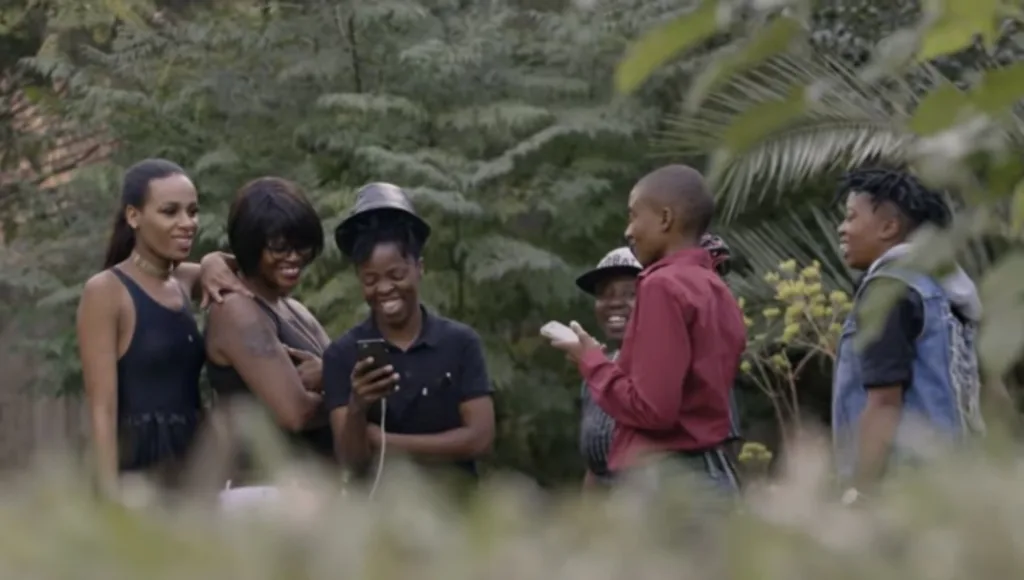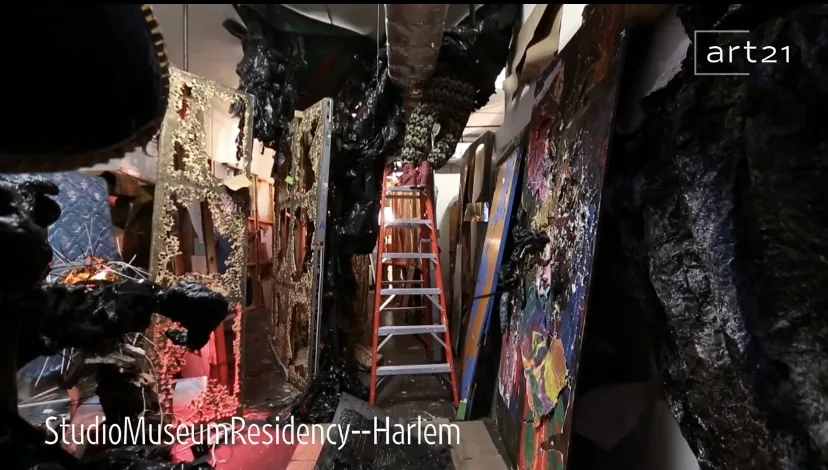When searching for documentaries to watch, Art21 is a good place to start. With so many great documentaries on the platform to choose from, it can be hard to pick one. Here, we have curated a list for you to start with.
What the Camera Cannot See, Richard Mosse

Artist Richard Mosse documents humanitarian crises and environmental catastrophes by making the unseen visible. This film on Art21 follows Mosse and his collaborators Ben Frost and Trevor Tweeten as they travel across the world to film under-reported world events in zones of conflict, repurposing surveillance technologies and scientific tools to capture stories and scenes that evoke deeper understanding and motivate audiences to act. In locations like the Democratic Republic of Congo (DRC), where over 50 armed groups are engaged in combat, or along paths of migration from the Middle East and North Africa into the European Union, the artist works to bring attention to conflict and suffering around the world. “My power, if I have any,” says Mosse, “is to be able to show you the things that I’ve seen in a more powerful way than perhaps the pictures you’ve seen in the newspaper of the same thing.”
Mosse’s work calls specific attention to the tools we use to capture and distribute information about global events. He actively questions why certain conflicts remain relatively unseen, as in the DRC with The Enclave (2012-2013), or interrogates systems of targeted surveillance and dehumanization, as in Incoming (2014-2017). These projects point not only to the problems of the situations and locales in which Mosse and his collaborators work, but also the difficulties that we encounter in perceiving and understanding these events and processes as viewers. The conflicts and crises that Mosse documents are seemingly too opaque and complex to be appropriately described, and so often go hidden or misrepresented. This issue is especially present in his recent projects, which center on the Amazon Rainforest. The Amazon is at the heart of his new works Broken Spectre (2018-2022) and Tristes Tropiques (2018-2022), which bring the realities of climate change into focus by revealing both its mundane operations and its catastrophic effects. The artist uses multispectral imaging, cameras that capture ultraviolet light, and tropes of Western media to show audiences the various scales and impacts of deforestation in the Amazon as well as their own implication in it. “We can’t see the climate changing, and that’s really the inherent problem.” says Mosse, “It’s on a scale beyond what we can perceive.”
Watch here on Art21
Mobile Studios, Zanele Muholi

Visual activist Zanele Muholi on Art21 explains the impetus behind creating what they call “mobile studios” to photograph members of the LGBTI community in South Africa. Freed from the limitations of a single studio space, Muholi travels to the homes and community spaces shared by the people depicted in their photographs. As a way to create work in which the participants feel most comfortable, these mobile studios allow Muholi to empower those around them, particularly the group of trans women featured in the Brave Beauties series.
When the Brave Beauties photographs are exhibited at Stevenson Gallery in Cape Town, Muholi invites the participants to visit the show and write testimonials directly on the gallery wall, so that viewers may learn more about their lives. As the participants explain, this act allows them to be seen and to speak for themselves. For Muholi, the photographs and the “activist wall” not only give voices to trans women in arts spaces but also write them into South Africa’s history.
Watch here on Art21
Between the Earth and the Sky, Wangechi Mutu

From her Nairobi studio, artist Wangechi Mutu considers her relationship with the natural world and the ways in which it has influenced her variegated artistic practice. A self-described “city girl with a nature brain,” Mutu recounts her upbringing in Kenya, memories of playing in her family’s garden, and attending an all-girls Catholic school. These experiences instilled a profound respect for both nature and the feminine in Mutu, alongside a curiosity about the African history, heritage, and culture that was omitted from her studies. Today, Mutu’s monumental sculptures of hybrid female, animal, and plant forms assert “how incredibly important every single plant and animal and human is in keeping us all alive and afloat.”
Tracing her journey from Kenya to New York, first as a university student and later as an established exhibiting artist, Mutu charts the evolution of her artwork from her collage paintings, to explorations with photography and heroic sculptures made from earth and bronze. In her early collage paintings, Mutu explored the tension created by mixing cut outs from wildlife and fashion magazines with vintage illustrations and her own watercolors. As her dense and colorful collage works grew in scale, the artist began incorporating her own photography into her paintings. This combination sparked Mutu’s reflection on the wider history of photography, colonization, and how Black and female bodies have been photographed, packaged, and consumed.
In her most recent works, including the Sentinel series (2016–present), The NewOnes, will free Us (2019) at The Metropolitan Museum of Art, and Crocodylusand MamaRay (2020) at Gladstone Gallery, Mutu draws upon her reverence for the divine feminine and her frustration with the schism between “the way we worship the image of the woman, but denigrate the actual human being.” The artist’s elegant and powerful hybrid female-animal figures command viewers’ attention and regard. Unable to return to her native Kenya for many years while living and working in New York, Mutu reflects on the convergence of African and Western influences that have informed her artwork and her binational identity. Mutu now works between her Nairobi and New York studios, looking to compare, combine, and understand herself from these multiple viewpoints.
Watch here on Art21
Abigail DeVille’s Flair for the Dramatic

How do you get your audience to touch the art? In this documentary on Art21, Artist Abigail DeVille constructs the set for a premiere performance of Adrienne Kennedy’s play She Talks to Beethoven (1989) at the JACK arts center in Clinton Hill, Brooklyn. Theater director Charlotte Brathwaite describes the play’s dreamlike style and time-bending narrative: an American expatriate in 1960’s Ghana “converses” with Beethoven in early 1800s Vienna. DeVille draws parallels between the play’s temporal cross-cutting and theoretical physics—specifically the concept of wormholes, or passageways in the space-time continuum—as well as the hidden histories and absences that mark the African American experience.
To create the sculptural set titled Intersection (2014), DeVille and Brathwaite drill holes into wooden flats, linking them together to form two concentric ellipses. Acquiring cast-off materials through the Recycled Artist in Residency program in Philadelphia, DeVille describes what attracts her to the discarded: “Material already has so much information trapped inside of it. It has whatever it’s chemically made up of, its physical and chemical properties, whoever owned it, loved it, and threw it away…What can you improve on that?” In a performance set to Beethoven’s Fidelio, the actors move fluidly through the dramatically lit set, sharing the sculptural space with an equally mobile audience. “You can hold an audience captive,” marvels DeVille, who is fascinated by the possibilities a theatrical context can provide. The film also documents DeVille at work in a residency at the Studio Museum in Harlem.
Watch here on Art21


